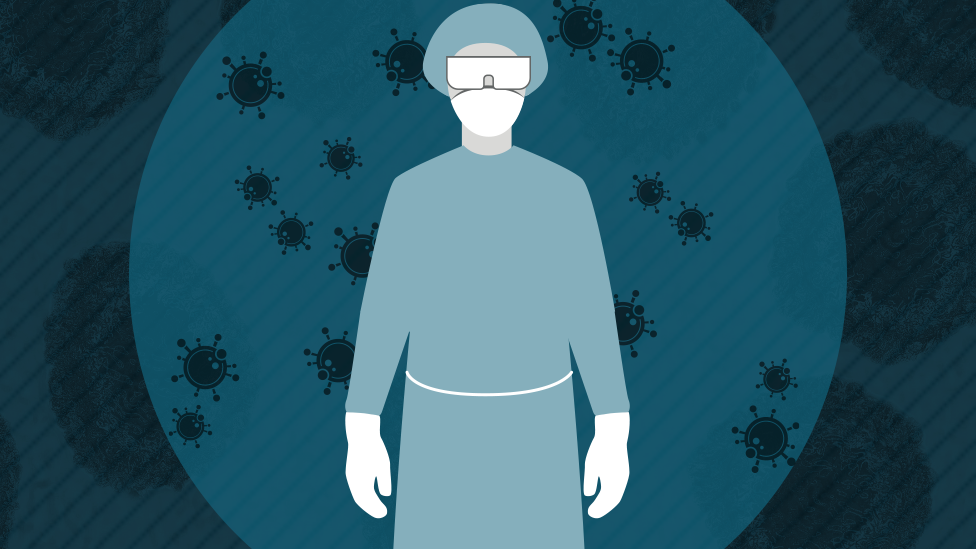Covid PPE: How healthcare workers came to feel 'expendable'
- Published
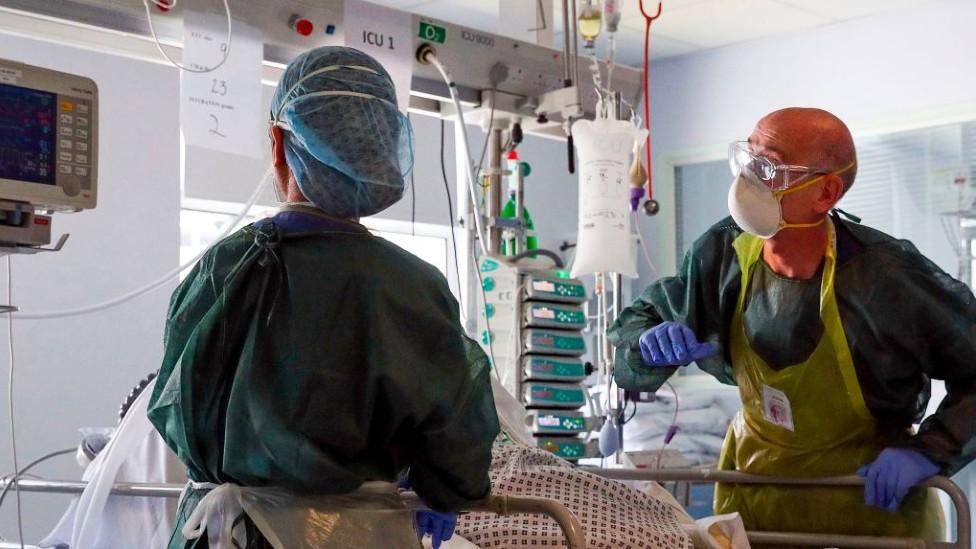
ICU doctors have the highest grade of PPE
Over the course of the coronavirus pandemic, there have been hundreds of deaths among healthcare staff from Covid and many thousands off sick or self-isolating, but many hospital staff say they still don't feel properly protected at work.
They blame a sudden weakening in policy on masks and other personal protective equipment (PPE) early in the pandemic.
And the largest health unions and many professional groups say the new variants of the coronavirus could put staff at even greater risk.
Matt Butler was preparing for a weekend shift last March, aware he would be caring for his first Covid-19 patient.
A consultant in geriatrics, he knew that the disease was taking a terrible toll on the elderly.
So he studied the personal protective equipment (PPE) instructions, issued soon after the crisis started, which said he would have to wear a long-sleeved gown, gloves, eye protection - and a particular kind of mask.
Known as an FFP3, it fits closely over the mouth and nose and has an in-built filter to screen out tiny virus particles called aerosols that can linger in the air.
This level of protection seemed to make sense because research into a related coronavirus, Sars, external, which claimed nearly 800 lives in Asia in 2003, found that aerosols could spread it.
A special training video from the NHS and Public Health England even demonstrated how to fit the mask properly.
So when Dr Butler went to bed on Friday 13 March, he felt reassured.
But when he arrived at the hospital the next morning, he was shocked to find that the official safety instructions had been mysteriously downgraded overnight.
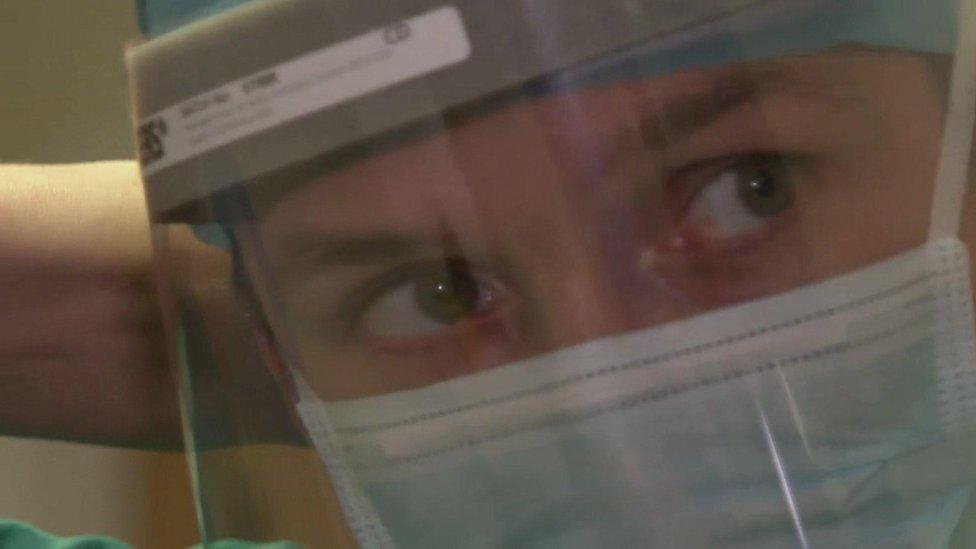
The surgical-style mask that was, overnight, deemed adequate
With no warning, staff on wards across the UK would now be getting lower levels of protection - no longer would Dr Butler and his colleagues be equipped with the FFP3 masks that they'd trained for.
Instead, they were told, surgical masks - which are far thinner and cheaper - were now deemed to be adequate.
"I was very scared and a lot of us were very scared," he says.
For this calm and experienced professional, facing a new virus was part of the job.
But how, he wondered, could FFP3 masks be thought essential one day but not the next? How could the risk from infectious aerosols suddenly vanish?
These were questions that would increasingly unsettle him and his colleagues as the pandemic escalated.
And they would lead to increasingly desperate appeals for better equipment by a leading healthcare organisations, the British Medical Association which represents doctors, the Royal College of Nursing, the College of Paramedics and many others.
As Dr Butler puts it: "We just feel like backs have been turned against us and that we're less important, we're seen as more expendable almost."
Who changed the policy and why?
With growing evidence that the virus can spread through aerosols, and with new variants increasing the risks of infection, many of the most prominent medical unions remain worried about the risks.
A decision last year that might appear to be a bit of ancient bureaucratic history is highly relevant right now and - in the view of some - a matter of life and death.
What Dr Butler didn't know when he turned up for work back in March 2020 was that wheels were turning behind the scenes in Whitehall.
March 2020 was a febrile time, with so much unclear about the virus itself, how to treat its victims and how emergency plans for a flu pandemic should be adapted for the coronavirus instead.
Decision-making involved a complex web of organisations known by a dizzying array of acronyms, and unpicking how things unfolded isn't easy.
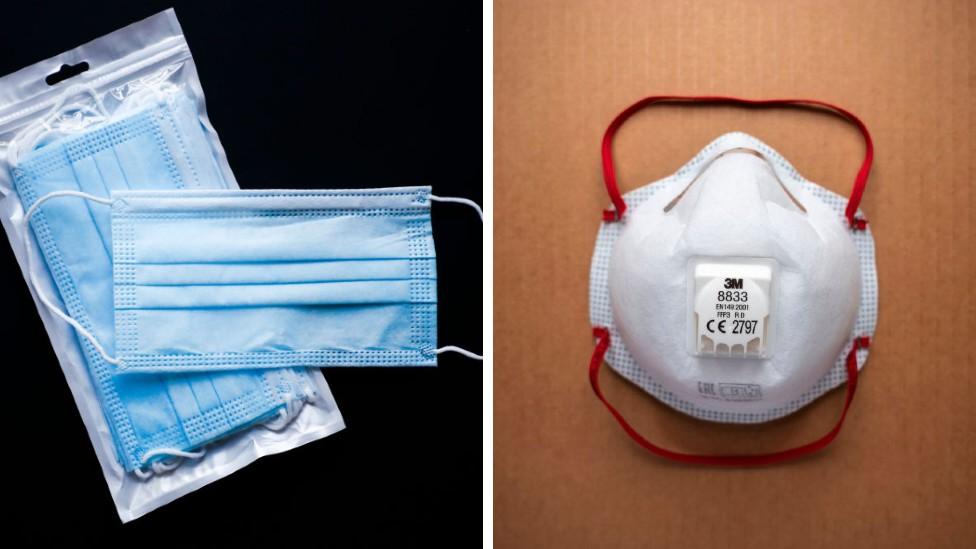
A FFP3 mask (right) and the thinner, and cheaper surgical masks that were deemed adequate
One of the most important groups is so obscure that it hasn't published any minutes since 2017.
The Advisory Committee on Dangerous Pathogens (ACDP) assesses how to handle biological hazards from anthrax to Ebola.
Back in January 2020, as details emerged from Wuhan, the committee had added the new coronavirus to a grim list of illnesses defined as a "high consequence infectious disease".
That alarming label carried a host of implications for labs and hospitals around the country.
It meant that ambulances had to go through a three-hour cleaning process between patients, and that everyone dealing with the virus had to wear a certain grade of PPE.
That included the FFP3 masks that Dr Butler and others had been poised to wear.
But on 13 March the advisory committee ruled coronavirus would no longer be defined as "high consequence".
The consequences would be far reaching.
Why did this decision matter?
The exact reasons for the decision have not been made public.
A government statement a few days later said it was a "technical" definition that simply reflected the fact that the death rate from the virus was much less severe than expected - far lower than Ebola, for example, where as many as 50% of infected people die.
In any event, the decision acted like a lubricant to the cogs of government.
The Department for Health and Social Care was said to be "moving towards" a shift from FFP3 masks to surgical ones, and a rapid sequence of events then made that happen:
Prof Jonathan Van-Tam, the deputy chief medical officer, agreed to consult the ACDP, the group advising on dangerous pathogens
Its chair told him that his committee was "unanimous" in declassifying the coronavirus as "high consequence"
That day another key committee - Nervtag (the New and Emerging Respiratory Virus Threats Advisory Group) - was told the government supported changing PPE recommendations, external
So, in a matter of hours, the key figures were aligned and the way was clear for a new message to go out: FFP3s were no longer required on the wards - as Dr Butler would discover when he reached his hospital the following morning.
Which face covering is best to wear?
A 'pragmatic' decision
Covid sceptics saw the move to declassify the virus as evidence that the pandemic was not a serious threat after all.
Among medics it fuelled very different suspicions: that the true reason for the hurried decision-making was because of a looming shortage of protective equipment.
A member of ACDP, speaking on condition of anonymity, said the decision was indeed "pragmatic", not because of pressure from government but because everyone knew the stockpile of PPE was limited.
"The reality was that we couldn't have given everybody an FFP3 anyway - there was no question of getting that quantity of them."
In addition, working in heavy gear all day would have been "incredibly difficult" for people.
Staff handling swabs from coronavirus tests had been complaining that the required PPE was cumbersome and that to scale up testing - an urgent priority at the time - the rules had to be eased.
"Did Public Health England and the Department of Health use the decision on a high consequence infectious disease as a cover for a change in clinical guidance? Possibly."
So could hospital staff have been better protected?
"Bluntly, in hospitals, you have to accept a certain level of infection. You could move to Ebola-style controls, but then you couldn't treat 40,000 patients."
How bad was the shortage?
An investigation by the National Audit Office (NAO) found that the national stockpile did not hold all the PPE it was meant to.
And it was designed for a flu pandemic, not one with a coronavirus, so the focus was more on protecting against infection spread by droplets and less on infectious aerosols contaminating the air in stuffy rooms.
So there were relatively few of the aerosol-filtering FFP3 masks - and a similar but less effective type known as FFP2.
By April there was a total of 26.3 million of these two categories of mask which was enough to last just two months.
Plus six million had passed their expiry date and had to be tested and relabelled.
Under the new guidance, these masks were needed for intensive care and for procedures that generated aerosols such as intubation. But even for these limited uses, it was proving hard to get fresh supplies.
Even in June, when most types of PPE were easy to obtain, there was still a problem getting hold of FFP3s.
The whole world was after the same equipment, so prices more than doubled. The bill for FFP3 and FFP2 masks bought between February and July reached £1.48bn.
Despite all this, the NAO was told by health officials that the protection for hospital staff had not been downgraded to match the PPE that was available.
Why have medics been so worried?
As the pandemic claimed the lives of more and more healthcare workers, the clamour from unions and professional bodies for better protection has become louder.
They highlight how the rates of infection among staff on general wards - where most Covid patients are cared for - are twice as high as in intensive care where medics have the best equipment.
A further concern is the risk from infectious aerosols, especially where there's poor ventilation - one identified by government's scientific advisers in the early months of the crisis., external
There is a detailed list of "aerosol-generating" procedures - or AGPs - for which staff have to wear FFP3 masks - but critics say these so-called AGPs are too narrowly defined and don't include some known to cause coughing, such as inserting feeding tubes or assessing the ability to swallow.
Around 20 major organisations representing thousands of healthcare workers ranging from dieticians to speech therapists - all of whom have close contact with Covid patients but are not given FFP3 masks - have formed the AGP Alliance to campaign for change.
"We're exasperated", says Dr Barry Jones, a spokesman for the group. "Why not take a precautionary approach? It's just common sense for people in hospital to be better looked after."
Another group, which Dr Butler belongs to, also questions the adequacy of ventilation in hospitals. FreshAirNHS says intensive care units have their air changed at least 10 times every hour - to help disperse and dilute aerosols - while general wards should have six per hour, but often have far fewer.
He says: "We're doing excellent hand washing contact precautions, we're distancing as much as we can - yet we're still getting outbreaks and we're still getting staff sickness."
Will anything change?
Health officials have consistently said staff safety is a top priority, that the latest evidence has been reviewed and that current policies will continue.
Dr Ben Killingsley, a specialist in acute medicine and member of Nervtag, says aerosols are seen as "the poor brother" of infectious disease transmission but are now recognised as playing a role.
In his view, the new more infectious variants may justify giving Covid-facing medics the FFP3 masks but it would be a major step, requiring each member of staff to go through a fitting lasting 30-60 minutes.
"Cost and logistics shouldn't be an obstacle", he says, but a more efficient first move would be for hospitals to enforce social distancing.
"My hunch is that if we could get away from the small doctors' offices that are overcrowded, with poor ventilation, infection rates would drop."
For Dr Butler, it's not a question of enforcing the guidelines or providing better masks, but doing both until hospital outbreaks are brought under control.
Related topics
- Published13 January 2021
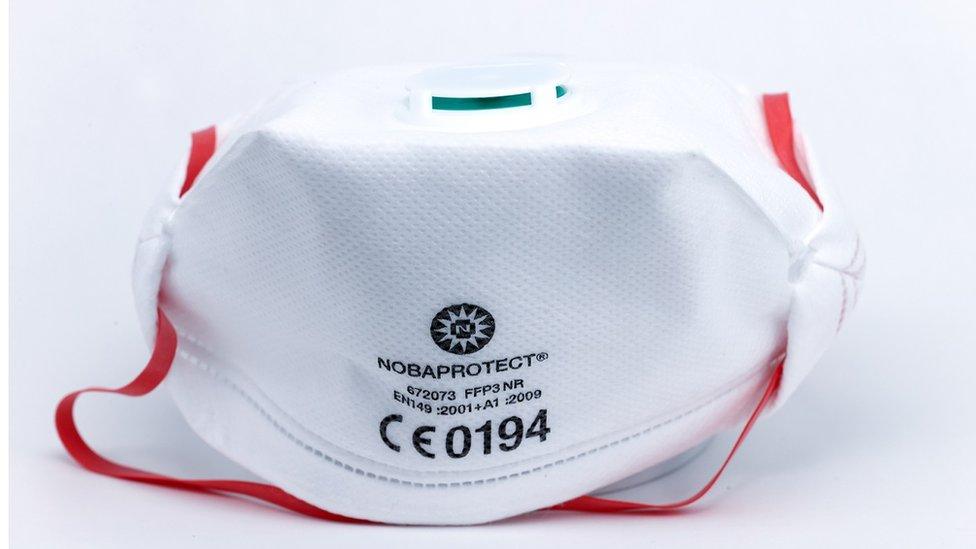
- Published19 February 2021
